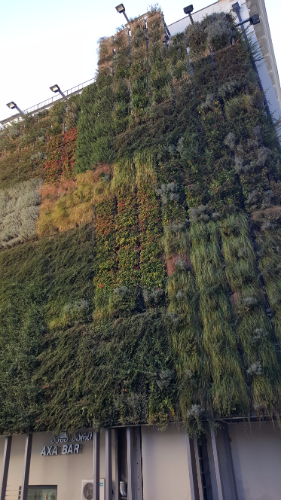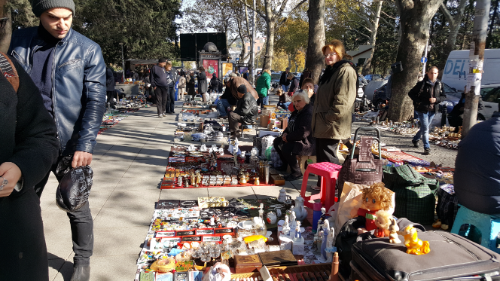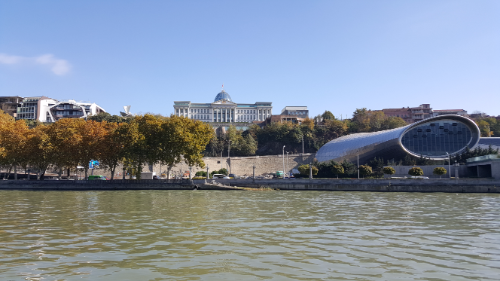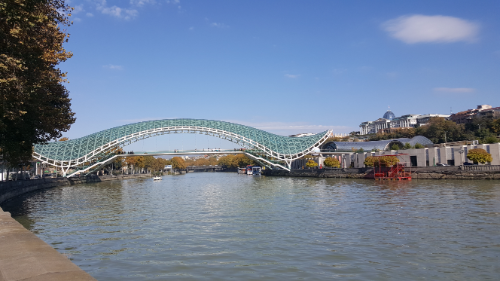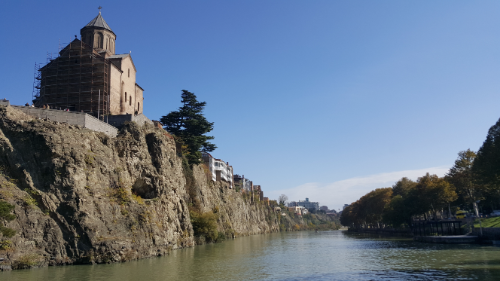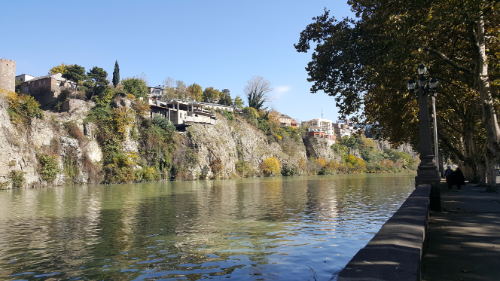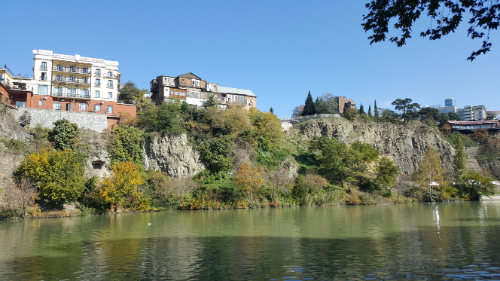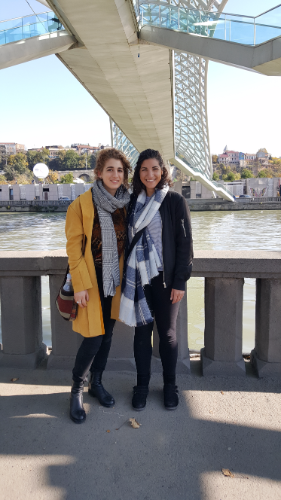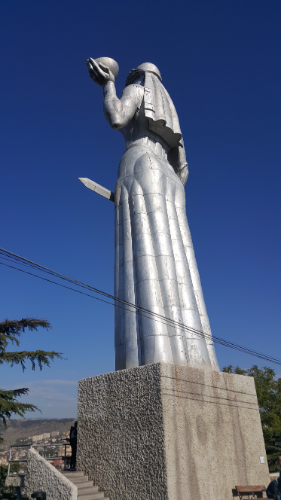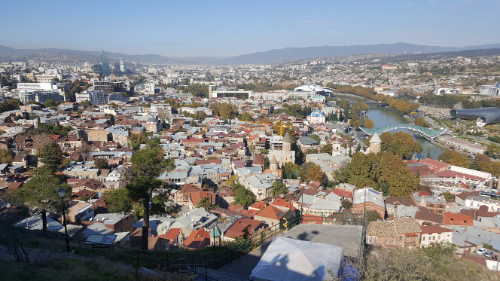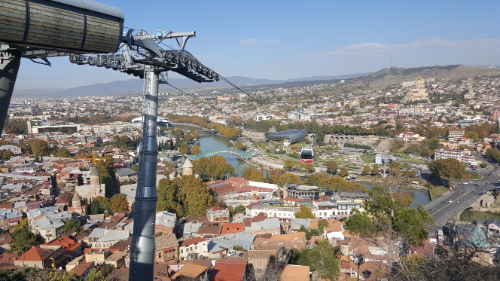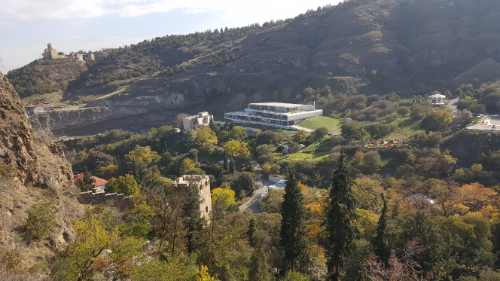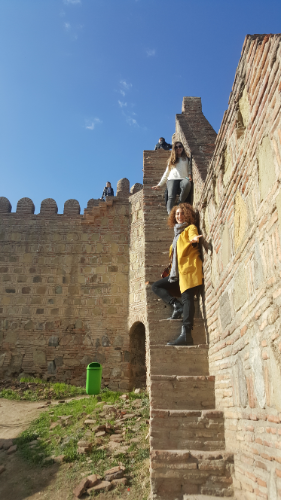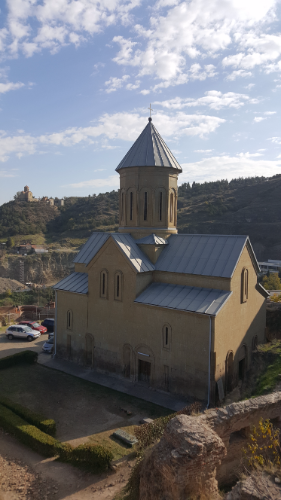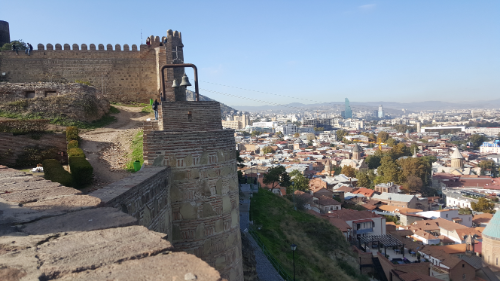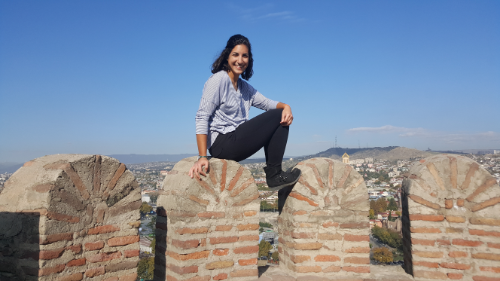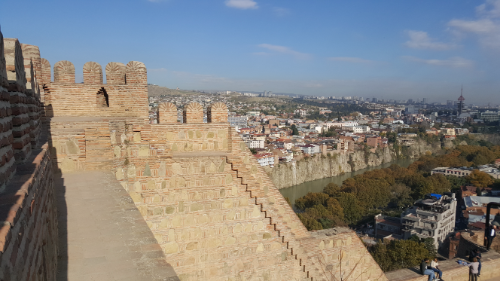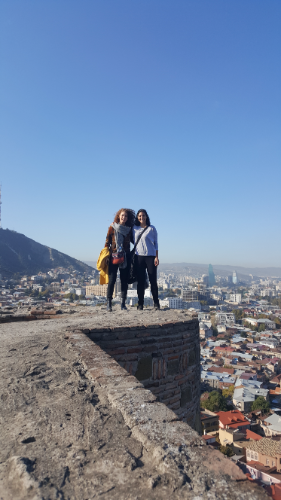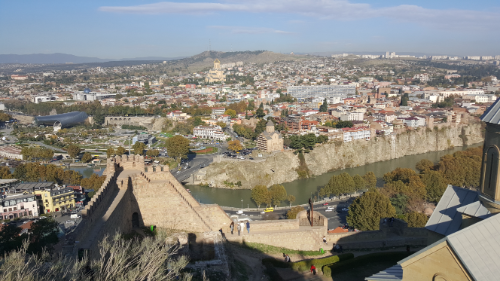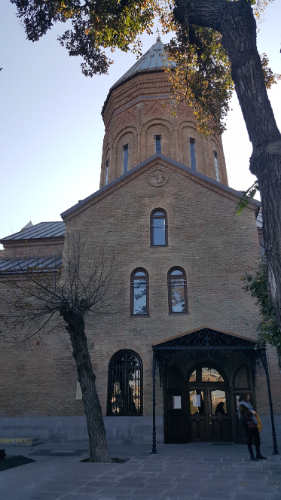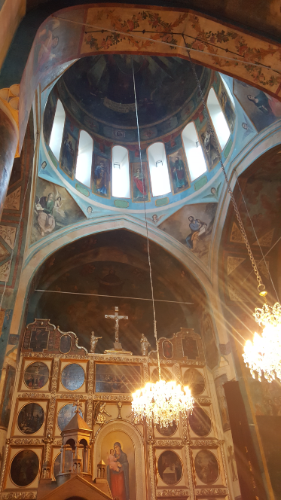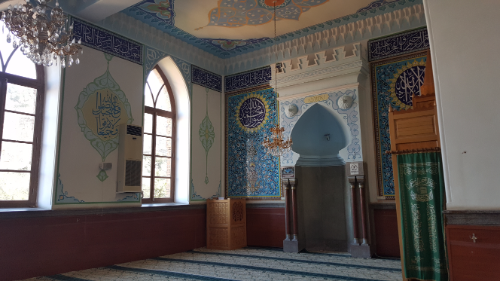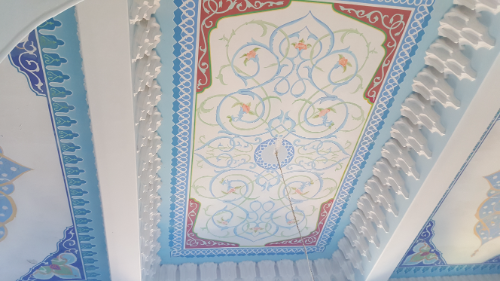During the rest of my time in Georgia, I’ll be honest… I didn’t exactly make the most of my time, if you’re looking at it from simply a sightseeing perspective. I, however, was thinking about it from more of a mental health perspective, and part of the reason I even planned to go to Tbilisi in the first place was because I wanted to feel like I could take some time to just relax without feeling the need to run around like a maniac and explore a new city. I had already seen a decent number of things there, and it made me feel like I could take some “me” time.
It also didn’t help that the weather was mostly a bummer. I was there for three days, and it was rainy and gross for two of them. My motivation was already fairly low, and the weather was all that was necessary to completely eliminate any chance of me being adventurous.


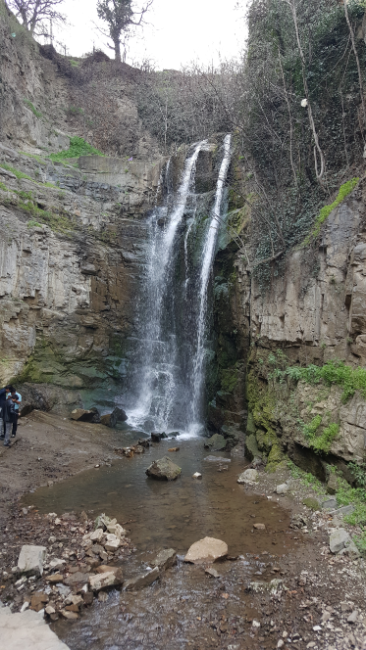
On my first day back after Batumi, I committed to doing the few things that I still had on my list. That list was admittedly pretty short, but I figured I should cross off the remaining items so that there was no danger of me leaving the country again without doing them. My first stop was in Old Town, right near the sulfur baths. There’s a sulfur waterfall there that we didn’t end up going to because everyone was hungry… the funny part about that is the fact that it took MAYBE 10 minutes to walk there from the location where that decision was made. It wasn’t anything jaw-dropping, but it was cool to think about the fact that I was standing in the middle of the capital city of Georgia, looking at a waterfall. Like… they have a waterfall in the middle of the city! Of course, it smells like sulfur and that’s gross, but conceptually very cool.
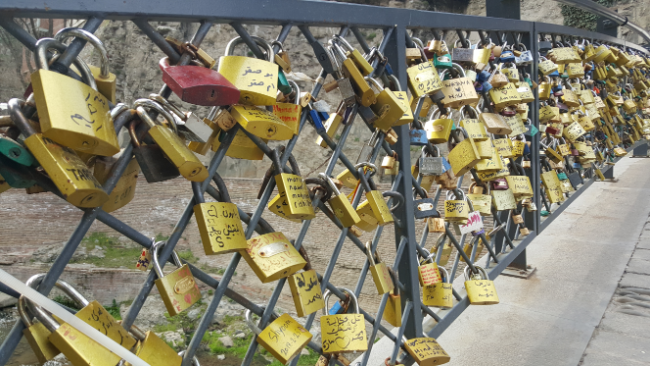
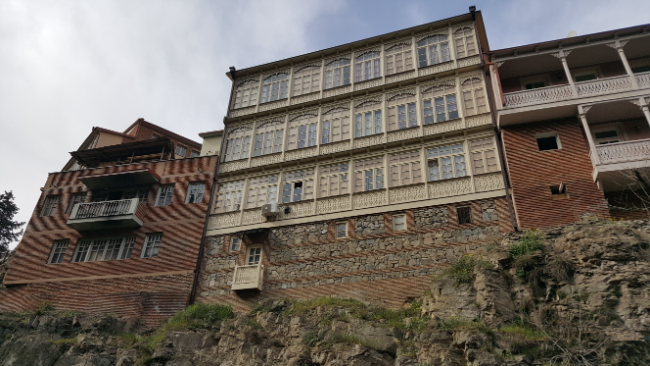

I also went back to St. George’s Armenian Church to pay homage to Sayat Nova, since I didn’t realize his gravestone was there until after we had already visited and left (I wrote more about that visit, who Sayat Nova is, and some other famous Armenians whose gravestones I visited here) and Ejmiadzin, the other major Armenian church that was closed last time we went. It wasn’t my favorite church from the inside, but I was excited to hear people speaking Armenian after only hearing Georgian for a few days, and I bought a candle to light just because I could. I asked for it in Armenian, the woman understood me, and I was thrilled to use my hard-earned language skills again, even for something so basic. It’s such a bummer when you spend all this time learning a language while living in the country where it’s spoken, get to a level of proficiency that makes you feel comfortable, and then leave the country and realize that everything you worked so hard to learn is completely useless in helping you to communicate in this new place. I know I’ve talked about this a lot, but it still frustrates me every time I think about it.
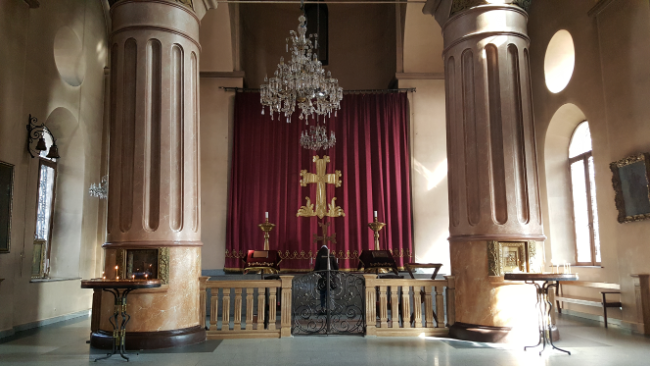
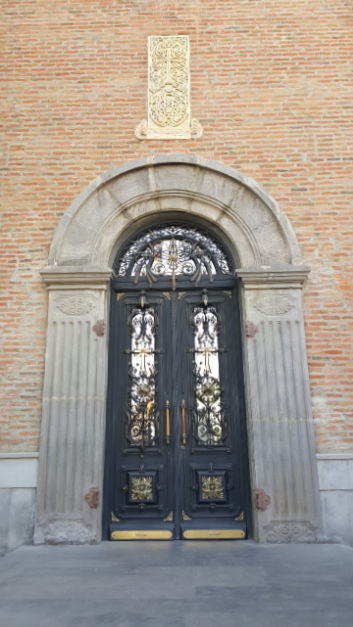
From there, I went back to the big Holy Trinity Cathedral that was partially built on the site of an Armenian cemetery. In my previous post about visiting there, I explained how the Armenian community freaked out about how the graves were being dug up without any respect, and the only appeasement offered was this little Armenian Pantheon that they hid behind the church. I say “hid” because even though I was looking for it, I STILL had trouble finding it. You might think I mean oh, if someone didn’t know it was there, they wouldn’t find it… no. I knew it was there, I had the location in front of me on google maps, and I still wandered around for at least 15 minutes before I figured out where it was and how to get there.
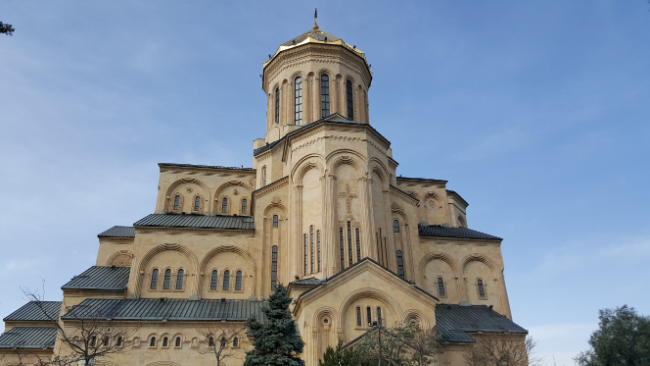
Yes, figuring out where it was and then how to get there were two separate steps, and neither of them was particularly easy. I walked in the general direction that google pointed me, and I couldn’t figure out what I was even looking for. Luckily, there were some pictures, and I spotted the top of the highest point in the pantheon peeking over someone’s house. Okay, now I knew where it was… but HOW was I supposed to get there?? I tried taking a direct route, and I’m fairly certain that I walked down someone’s driveway and through their yard before realizing that I couldn’t see my reference point anymore, and there was a wall blocking me from going the way I thought I needed to. Finally, I figured out the roundabout way you have to walk there, including walking by a security guard who, I didn’t realize until afterward, was only there to make sure that unauthorized cars didn’t try to come into the church grounds. I thought I wasn’t allowed to leave that way, but he couldn’t have cared less about me walking past. Good to know.
The Pantheon was kind of sad, mostly because I knew that it was just a shadow of what it used to be. The most notable person buried there (in my personal opinion) is Hovhannes Tumanyan, the writer that I also talked about in my Famous Armenians post.
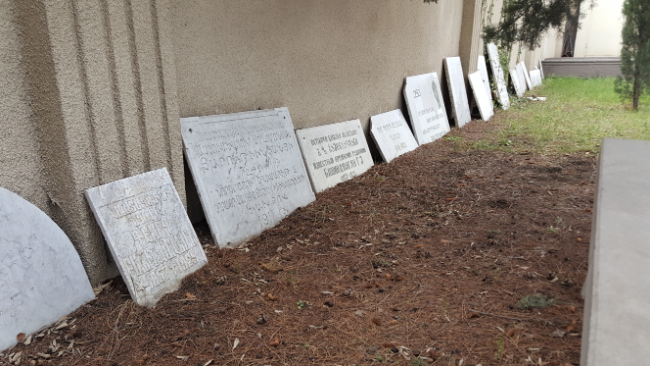

Having crossed those few things off my list, I felt pretty good about relaxing for the next few days. Well, I kind of relaxed. I had a bunch of things I needed to get done, and as is the way with those things, they all took longer than I expected. I also had some things come up related to planning the later stages of my trip, and planning-related tasks are always rabbit holes. You can spend an eternity on them without even realizing.
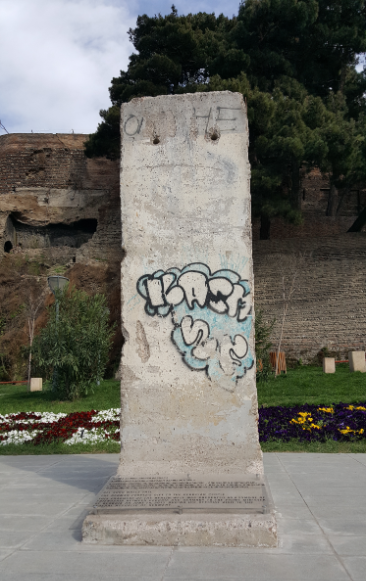
The next day, I went on a sketching adventure. I’ve been carting a sketchbook around with me since I got to Armenia, and I’ve done barely anything with it. I decided that I might as well put it to use if I’m going to keep carrying it with me, so I walked around the downtown area and made a couple “quick-sketch” stops. I’m trying to get better at sketching quickly, rather than always spending hours on each drawing, so I limited myself to half-hour-long stops. After I get better at those, maybe I’ll cut down the time a bit more, but for now, I’ll just say that I need to keep practicing. You have to start somewhere!
I also spent a decent amount of time hanging out with the other people in my hostel. This hostel was much smaller than the ones I usually stay in, so it felt more like a little family. There were some cool people there, and we went out to eat together, played Jenga (Including potentially the world’s longest game where, by the end, we all just wanted to stop playing because it was way too stressful), learned about each other’s countries, and had fun just spending time together. Hostel living frequently becomes such an interesting way to learn more about the world because you get to hear the opinions of people who are actually from different places. We always hear one side of the global narrative in the States, and it’s whatever side the government wants us to hear. As much as we like to think that we aren’t fed propaganda, we are. It’s just slightly more subtle. It’s like the same thing I realized in Armenia… In the US, we have such a different picture of, for example, Russia, than they do there. In Georgia, I met a girl from Russia, and she obviously had another perspective to offer. It’s still not easy to pick out the “facts” (whatever that even means) about things, but hearing different views is a good way to make sure that you’re thinking critically about the information you’re given. That’s a good lesson for life in general.
Anyway, just more random musings. My next stop after Tbilisi was Istanbul, Turkey, and I had an inconveniently-timed 4:30AM flight there. I didn’t bother reserving a space at the hostel for the night because I knew I wouldn’t end up sleeping even if I did. Instead, I just hung around until midnight when I made my way to the bus stop to hop on an airport-bound bus.
There are certain times in particular that not being able to speak the language in a country becomes extra frustrating. One of those times is when announcements are being made, like on my delayed train to Batumi, and you have no idea what information is being shared. Another time is when people are having an argument or someone is causing a ruckus and you can’t determine what your response should be to their actions because you don’t know what the issue is. On the bus to the airport, this guy got on (let’s call him “yelling guy”) and started yelling about this and that… and I had no idea what this and that were because it was all in Georgian. Most people were just ignoring him. Eventually, some guy started shouting back at him and then got off the bus. Then a new guy came and started trying to calm yelling guy down, but I don’t think he made a difference. Eventually, the bus stopped and the driver and some other transit officer came back and then they were all shouting at each other, and calming guy was seemingly defending him…? But who knows because this entire analysis is based on body language and tone. Finally, they got him to settle down a little, and someone motioned for yelling guy to come sit next to him. THEN yelling guy started trying to talk to me (I was standing nearby), and I had the fun task of getting him to understand that I don’t speak Georgian… thankfully, the guy next to him figured it out and explained the situation, but somehow that never seems to stop anyone from still trying to communicate by just speaking AT you. After he was just told that I couldn’t speak, he continued to ask me questions which I responded to with wide eyes and a confused face. The guy next to him kept laughing and saying (I imagine), “DUDE! She can’t understand you!”
Finally, we made it to the airport, and I jetted off the bus. I still had some time to wait before I could check in, so I made myself comfortable on an airport chair and began a long night of non-restful sleep in various awkward and uncomfortable positions.

